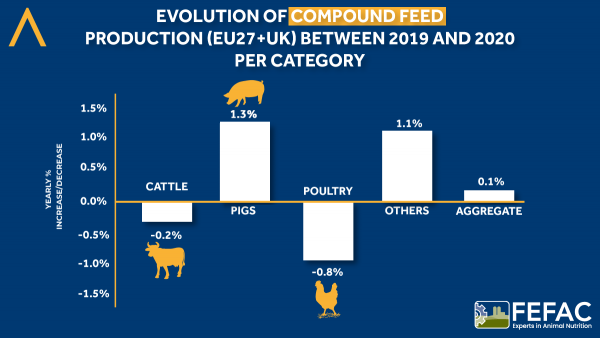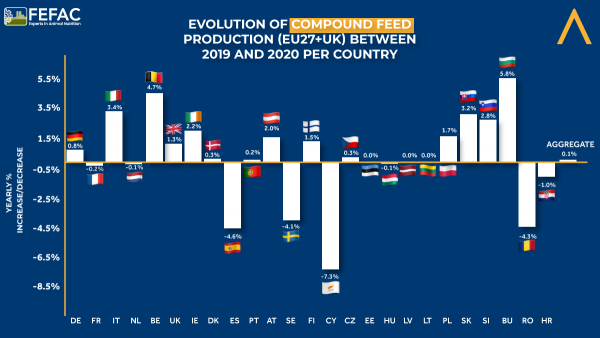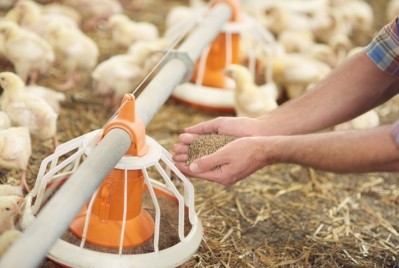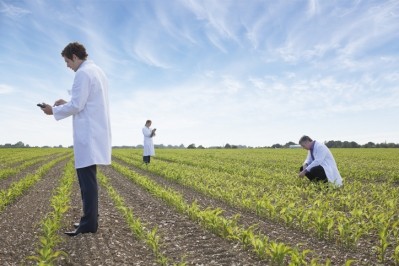Compound feed production volumes for EU and UK better than forecast
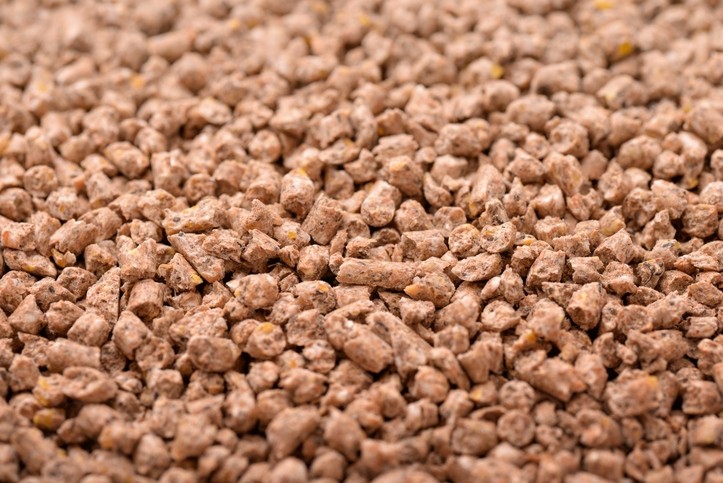
EU compound feed production (EU 27+UK) for farmed animals in 2020 is estimated at 164.9m tons, an incremental increase of 0.1% compared to 2019, according to data provided by FEFAC members.
Despite the COVID-19 pandemic and its heavy impact on several sectors including foodservice and tourism, the European compound feed industry managed to keep production at a steady pace, contrary to earlier predictions.
While cattle and poultry feed volumes saw a decline, the pig sector experienced production growth compared to 2019, reported industry representative body, FEFAC.
Poultry feed takes a hit
A decrease of 0.8% was seen for EU poultry feed production, and a development that was the result of the combined effect of the spread HPAI and COVID-19 lockdown measures, said the trade group.
In 2020, there were two seasons of the HPAI epidemic in Europe, which had the knock-on effect of depressing the poultry sector, with Hungary the most affected country in that respect.
The Spanish poultry sector was particularly hit hard; it saw a decline in output of almost 20% compared to 2019, noted FEFAC.
Cattle feed volumes robust
Cattle feed production decreased slightly - by 0.2% - and this decline was mainly due to the indirect impact of COVID-19 and the closure of the hotel, restaurant and catering sectors, leading to a shift in consumer demand for products of animal origin.
But EU cattle feed tonnage did not fall as much as initially expected due to a drier than normal spring season and poor grass growth in several countries, remarked FEFAC.
Pig feed segment proved a winner
Despite the spread of ASF in Europe and its impact on the pig sector, pig feed production increased by 1.3% in 2020.
“This was mainly because several countries, benefiting from Germany´s export ban, increased their exports to China. Furthermore, due to COVID-19 problems with slaughterhouse capacity, many farm animals stayed on the farms longer than necessary, which led to higher feed consumption. And, compared to young animals, finishing animals have a higher feed conversion ratio.”
Outlook
FEFAC said that very low profitability has been the hallmark of the EU pig and poultry sectors during the first months of 2021, mainly due to higher feed prices, which are linked to the global grain market rally that started in the final quarter of 2020.
Moreover, an increasing number of EU countries face problems in terms of exports of animal products due to the evolving AI and ASF situation, said the trade body.
Overall, it is expected there will be little in the way of let up in terms of challenges arising from the combination of the COVID-19 pandemic and animal diseases. Those developments will have an ongoing impact on EU compound feed production volumes, cautioned FEFAC.
“Next to that, the impact of the EU Green Deal policy agenda and national authorities’ initiatives to tackle environmental emissions and animal welfare issues continue to create additional pressure on the EU livestock and feed sector.”
